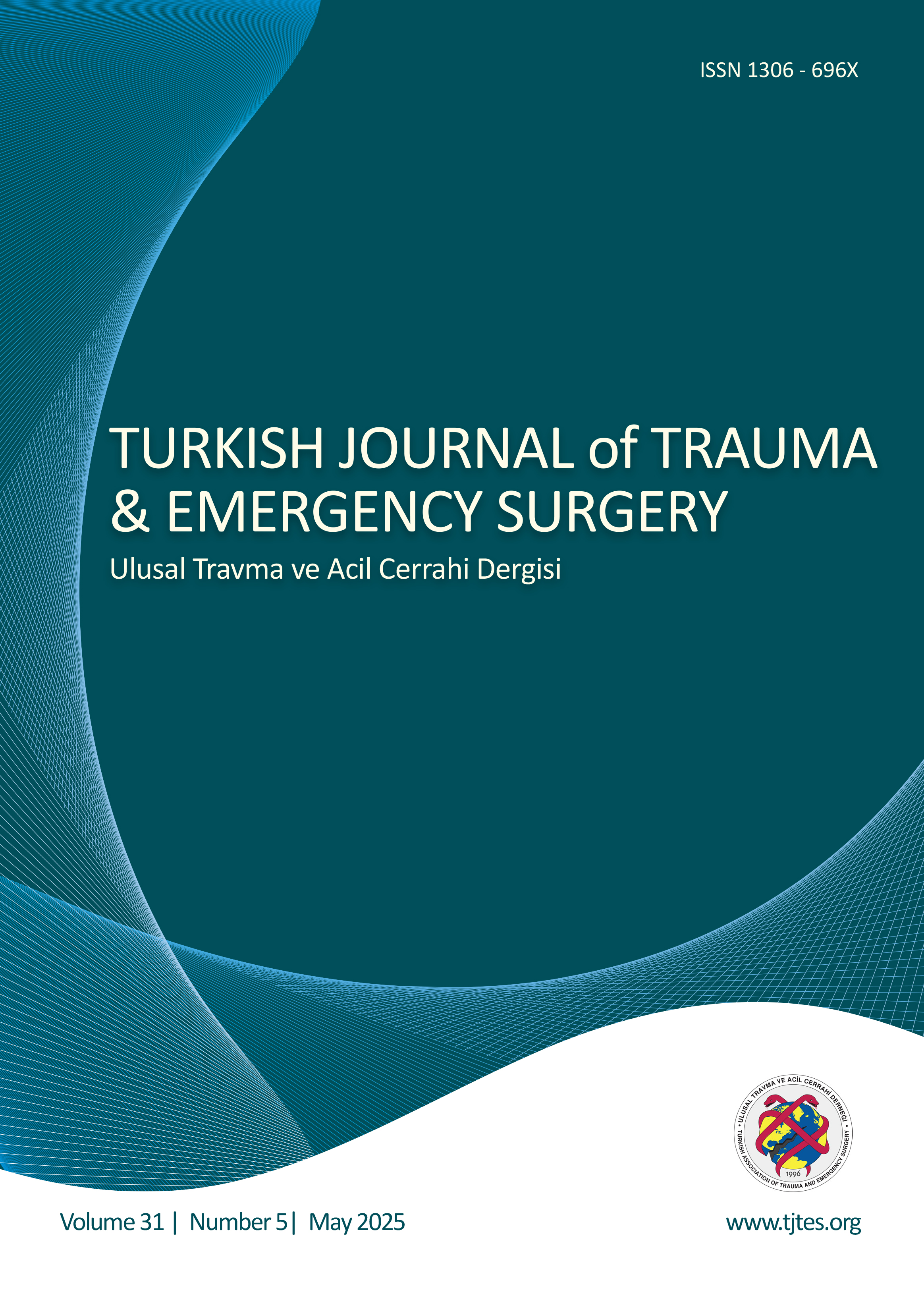Hızlı Arama
Akut Rockwood Tip III/V Akromioklaviküler Çıkıkların Tedavisinde Açık Çift Düğme Tekniği Kancalı Plaktan Üstündür
Furkan Yapici1, Hanifi Üçpunar1, Volkan Gür1, Ahmet Sevencan2, Yusuf Onur Kizilay3, Resit Karaköse1, Yalkin Çamurcu31Erzincan Üniversitesi Tıp Fakültesi, Ortopedi ve Travmatoloji Anabilim Dalı, Erzincan2MS Baltalimanı Kemik ve Eklem Hastalıkları Eğitim ve Araştırma Hastanesi, Ortopedi ve Travmatoloji Kliniği, İstanbul
3Atlas Üniversitesi Tıp Fakültesi, Ortopedi ve Travmatoloji Anabilim Dalı, İstanbul
AMAÇ: Bu çalışmanın amacı, akromiyoklaviküler eklem dislokasyonu (AKED) tedavisinde açık çift düğme (ÇD) ve kancalı plak (KP) tekniklerini klinik ve radyolojik sonuçlar açısından karşılaştırmak ve hangi yöntemin daha üstün olduğunu belirlemektir.
GEREÇ VE YÖNTEM: Bu geriye dönük karşılaştırmalı çalışma, Haziran 2014 ile Şubat 2018 arasında bu implantlardan biriyle (22 KP ve 21 ÇD hastası) tedavi edilen AKED hastalarını (Rockwood tip III/V) içermektedir.
BULGULAR: Çalışmaya yaş ortalaması 41.8±17.4 yıl olan toplam 43 hasta (39 erkek, 4 kadın) katılmıştır. Ortalama takip süresi 20.6±7.5 aydı. ÇD grubunda ortalama floroskopi, ameliyat ve işe dönüş süreleri daha kısaydı. Sırasıyla ÇD ve KP grupları için komplikasyon oranları %23.8 ve %54.6, yeniden ameliyat oranları (zorunlu implant çıkarımı dahil) %4.8 ve %77.3, ortalama Constant skorları 92.1±3.4 ve 88.3±4.2, ortalama Görsel Analog skala puanları 0.8±1.0 ve 1.5±1.0 idi. İmplant çıkarımı, KP grubundaki tüm reoperasyonların ana nedeniydi. Oysa ÇD grubunun tek reoperasyonu, yeniden dislokasyona neden olan ve tünel malpozisyonundan dolayı gelişen bir korakoid sıyrılmasından kaynaklandı. KP grubunda akromioklaviküler eklem artriti (%36.4) ve subakromiyal osteoliz (%31.9) sık görüldü. ÇD grubunda en sık görülen komplikasyon malredüksiyondu (yetersiz korrek-siyon) (%9.6).
TARTIŞMA: ÇD fonksiyonel sonuç, ameliyat sonrası ağrı, komplikasyon ve reoperasyon oranları, operasyon ve floroskopi süreleri ve işe dönme süresinde KPden üstündür. Ayrıca KP hastalarının çoğunda implant çıkarımı nedenli reoperasyona ihtiyaç duyulmuştur. Bu nedenle, açık ÇD tekniği, KP prosedürüne tercih edilmelidir.
Open Double-Button Technique is Superior to Hook Plate in the Treatment of Acute Rockwood Type III/V Acromioclavicular Dislocations
Furkan Yapici1, Hanifi Üçpunar1, Volkan Gür1, Ahmet Sevencan2, Yusuf Onur Kizilay3, Resit Karaköse1, Yalkin Çamurcu31Department of Orthopedics and Traumatology, Erzincan University Faculty of Medicine, Erzincan-Turkey2Department of Orthopedics and Traumatology, MS Baltalimanı Bone and Joint Diseases Training and Research Hospital, İstanbul-Turkey
3Department of Orthopedics and Traumatology, Atlas University Faculty of Medicine, İstanbul-Turkey
BACKGROUND: The aim of this study is to compare open double-button (DB) and hook plate (HP) techniques in the treatment of acromioclavicular joint dislocation (ACJD) in terms of clinical and radiological outcomes and to determine which method is superior.
METHODS: This retrospective comparative study included patients with ACJDs (Rockwood Type III/V) who were treated with one of these implants (22 patients with HP, 21 patients with DB) between June 2014 and February 2018.
RESULTS: A total of 43 patients (39 men and 4 women) with a mean age of 41.8±17.4 years have participated in this study. The mean follow-up time was 20.6±7.5 months. Mean times of fluoroscopy, operation, and return to work were shorter in the DB group. Compli-cation rates were 23.8% and 54.6%, reoperation rates (including mandatory implant removals [IR]) were 4.8% and 77.3%, mean constant scores were 92.1±3.4 and 88.3±4.2, and mean Visual Analog Scale scores were 0.8±1.0 and 1.5±1.0 for the DB and HP groups, respec-tively. IR was the main reason for reoperations in the HP group, whereas the DB groups only reoperation was caused by a coracoid cutout (due to coracoid tunnel malposition) leading to redislocation. AC joint arthritis (36.4%) and subacromial osteolysis (31.9%) were com-monly encountered in the HP group. The most frequent complication of the DB group was malreduction (initial undercorrection) (9.6%).
CONCLUSION: DB was superior to HP in functional outcome, post-operative pain, complication and reoperation rates, operation and fluoroscopy times, and time to return to work. Besides, reoperation (for IR) was needed in most of the HP patients. Therefore, the open DB technique should be preferential to the HP procedure.
Makale Dili: İngilizce




